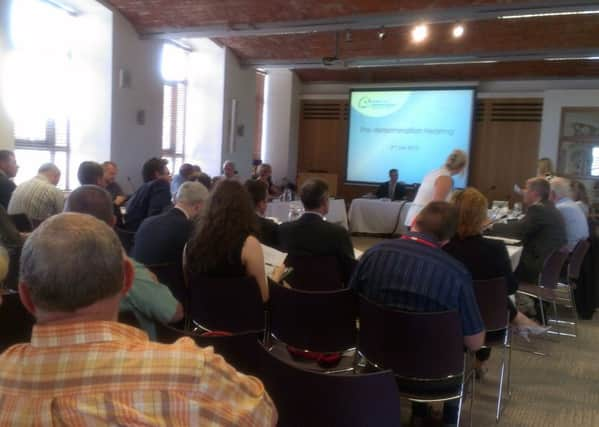University’s housing plan would ‘overwhelm’ Jordanstown, say objectors


The hearing, which took place at Antrim and Newtownabbey Borough Council’s Mossley Mill headquarters on Thursday, July 2, saw supporters of the application, objectors and consultees address the council’s Planning Committee.
Planning Officer Barry Diamond told the committee that the 600 homes would occupy 26 hectares of the 69-hectare site, and that around 45 objections had been received to date.
Advertisement
Hide AdAdvertisement
Hide AdRepresenting the objectors, Alderman Tom Campbell said he had concerns over the “scale and density” of the proposed development.
He stated: “My impression is that under these plans Jordanstown is to be sacrificed for the betterment of plans for the Belfast campus.
“It is very regrettable that the university has failed to work with the local community to find some form of compromise on those plans.
“This is equivalent to Glenarm, which has 500 residents, and we could have twice the size of Glenarm with potentially 1,200 residents but without the infrastructure.
Advertisement
Hide AdAdvertisement
Hide Ad“I will be urging this committee to refuse planning permission.”
Alliance MLA Stewart Dickson, who was also representing the objectors, told the committee that 600 houses would be “overwhelming” for the Jordanstown community.
“600 houses in a very tight corner of the university site causes concern to local residents,” he stated.
“It’s bitterly disappointing that a university which prides itself on turning out architects and town planners has failed to leave behind a legacy project.
Advertisement
Hide AdAdvertisement
Hide Ad“I would have been delightedly sitting down to discuss an eco village or legacy here but this is accounting-driven.”
Mr Dickson also raised concerns about access to the site via the Jordanstown and Shore Roads, and over the provision of places for the children of the residents in local schools and nurseries.
He added that there would need to be additional community facilities provided on the development, such as shops and churches.
Also speaking on behalf of the objectors was Mr Gordon Irwin, who called for a public consultation or public enquiry into the application.
Advertisement
Hide AdAdvertisement
Hide AdUlster University representative Mr Paul Spray said that over the past 40 years the university had developed a “strong, mutually beneficial relationship with the community which is very important to the university.”
He continued: “It is our intention not only to retain the sports facilities but to retain and enhance them and to create a new sporting centre.
“Student accommodation forms a key part of what is proposed to be retained as does the specialist Firesert centre.
“We consider it really important to have the right framework for development for the Jordanstown campus.
Advertisement
Hide AdAdvertisement
Hide Ad“We are trying to create a framework that directs the future use of the site.”
Mr Spray revealed that the university would retain leasehold control of its research and sporting facilities as well as outdoor playing fields.
He also said that a traffic study showed that there would be a “net reduction in overall traffic” if the development went ahead.
Mr Richard Bowman of Strategic Planning, who is responsible for the management of the planning application, said that the site density was regarded as low to medium and that consultations with the Education and Library Board had revealed that there were 1,800 spaces in Newtownabbey schools.
Advertisement
Hide AdAdvertisement
Hide AdIn response to Councillor Trevor Beatty’s concern that there could be up to 2,000 residents on the site, Mr Bowman said that there were “circa 10,000” people on the site currently.
TransportNI representative Charles Dickinson said that his organisation was “satisfied” with the proposal and that the new signal-controlled roundabout at the Shore Road was “one of the highest-capacity junctions available.”
He added that he believed the Jordanstown junction could cope with the traffic generated by the proposal and that TransportNI had made a “positive recommendation” on the proposal to council.
A DARD representative said the development “should have a neutral effect with regard to flood risk on the site.”
Advertisement
Hide AdAdvertisement
Hide AdEducation Authority representative Ms Eilish Malin confirmed that there were “just over 1,800 places in controlled primary schools and maintained primary schools,” but revealed that these places were spread right across the former Newtownabbey Borough Council area.
Planning committee chair, Councillor Roderick Swann reminded attendees that no decision on the planning application would be made during the meeting.
• For the full story, see the Newtownabbey Times, in shops from July 8.